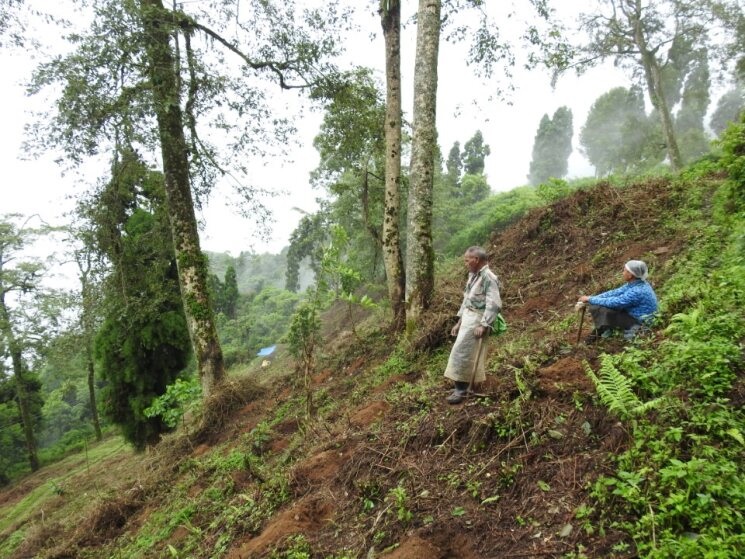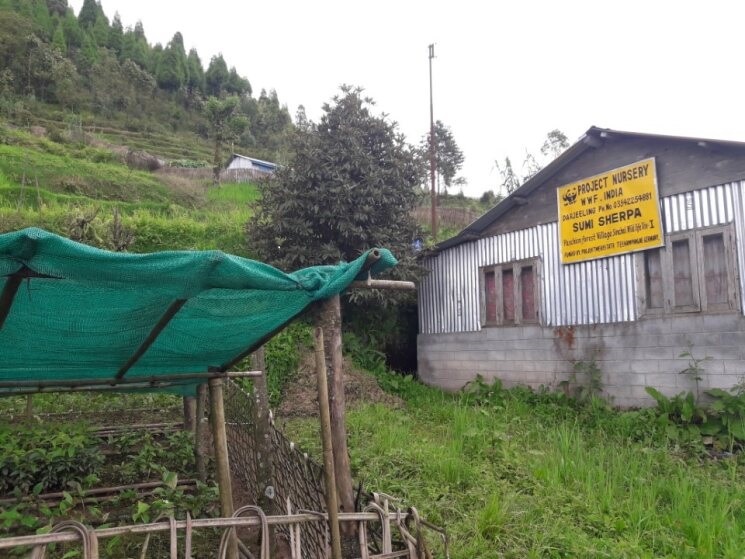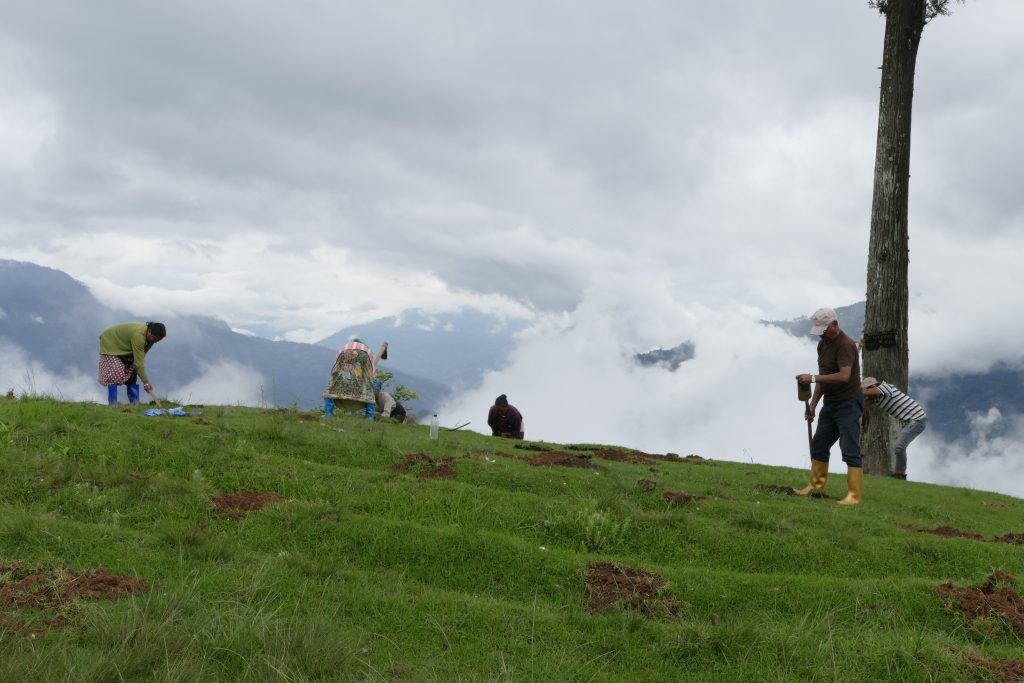A 25-year-long reforestation project, which kicked off in 1996 at Darjeeling to arrest deforestation, has paid off. A report by Deepanwita Gita Niyogi

After his retirement as a tea garden worker, Birbahadur Yogi found a new vocation in life. In 2010, Yogi, a resident of Darjeeling district in West Bengal, started working with WWF-India on a hill restoration project which he continued actively for the next four years along with many of his companions.
A resident of Phoobsering tea estate area, which lies at an elevation of 1089 metres, Yogi was already a member of Sunakhari, an active self-help group in his village, with a population of about 2000. This helped him to work at the community level, the 72-year-old man said.
“I participated in the plantation work in Phoobsering which was carried out over an area of 20 hectares to restore the hills after I retired from work. Over the years, several community groups were also involved in the plantation activity carried out at various locations across Darjeeling,” Yogi said.

His village is about 13 km from Darjeeling. Most people in Yogi’s village work in tea gardens. Some have agricultural lands too where they grow vegetables for daily use.
Reviving the hills
Pasang Lepcha, who worked on the WWF-India restoration project report, Reforesting the Darjeeling Hills (1996-2022), on the completion of 25 years, informed that restoration started way back in 1996 to revive degraded land and increase green cover in the Darjeeling Hills.
Pemba Tshering Bhutia from WWF-India, who has been with the non-profit for 22 years, admitted that high demand for fuelwood led to deforestation in the first place. The demand escalates during the long and harsh winter months.
“To control the situation, a plantation took place, where community members involved in the work planted local tree species. Now, with the arrival of gas cylinders, the pressure on forest for firewood has somewhat reduced,” Bhutia said.
According to Lepcha, restoring the hills through plantation was the main aim. Tree plantation happened in tea gardens, army lands, forest areas and community lands. One special place covered under the project was Margaret’s Hope tea estate.
The project, which has been successful, may continue for five more years. The organisation has project nurseries for the purpose from where saplings are supplied. When the project was launched, 14 nurseries were established. At present, only two nurseries function. Over the year, a total area of 510 hectares has been covered. It is a huge area to be covered in the hill slopes where there are multiple challenges.

For Yogi, the work has been a rewarding experience as he has earned a lot of respect from his community members. “There is a healthy forest in and around the Phoobsering tea estate where birds are seen and even leopards have been spotted. At 72, Yogi still takes an active interest and keeps an eye over the plantation area. Along with Yogi, other retired people from the tea garden also carried out the work,” Lepcha added.
High pressure on the hills
Darjeeling, popular all over the world for tourism, fine tea and timber, is experiencing a high level of pressure from tourists in recent times. The place, known for rich biodiversity and cultural values, is running out of water. Darjeeling lies in the Eastern Himalayas and is part of the Indian Himalayan region.
Deependra Sunar, who once worked as a teacher in a school in neighbouring state Sikkim before becoming a part of WWF-India, said Project SERVE (Save the Environment and Regenerate Vital Employment) was a single-donor project which helped start the plantation activity in the 1990s. Tea estates, the forest department and community-based organisations have been partners in this project all along.
“The catchment area of Darjeeling falls in the Senchal wildlife sanctuary which is a protected forest area. There are several springs which act as the lifeline for the local population. The plantation of over three million saplings will also help revive these natural springs, besides addressing land degradation,” Sunar added. Local springs are an alternative source of drinking water in both urban and rural areas of Darjeeling. Some of them are in the heart of the town. Tree plantation will help recharge the groundwater.
Apart from degradation due to the loss of trees, weeds also spread in many areas. It was also a major problem that has been addressed through plantation activity. Another objective of the plantation is to arrest soil erosion. Pits are also being dug to conserve rainwater and prevent run-off.
Besides plantation activity which ensured the livelihood aspect of communities through the establishment of nurseries, communities are being encouraged and trained in beekeeping. Distribution of improved cook stoves has also taken place to reduce the dependency on forests or fuelwood.
According to Sunar, as a result of climate change, the rainfall pattern has changed in Darjeeling. “Now, it rains heavily over a short period of time which destroys the top soil. Earlier, it was not so.” Thus, it is important to work in this fragile, biodiversity-rich place.













